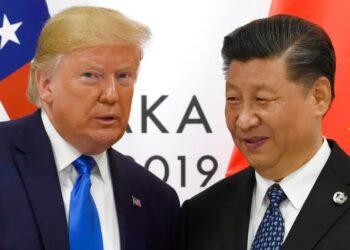November 08-2013
Iraq’s much-heralded oil revival is stalling, and, unless momentum is regained, Baghdad will report an output decline for 2013, its first after two years of robust gains.
Iraq’s problems bring joy in Tehran, because they put more upward pressure on prices. But Iraq’s problems are not serious enough to allow Iran to regain its position as OPEC’s Number Two producer.
Swift work since 2010 at Iraq’s southern oilfields by the likes of BP, Exxon Mobil and Eni raised output by 600,000 barrels per day to 2.9 million bpd in 2012, turning Iraq into the world’s fastest growing exporter. Iraq’s rising output also offset almost half of Iran’s export drop of 1.4 million barrels a day.
Even more impressive gains were expected this year with Baghdad announcing a 2013 target of 3.7 million bpd in December 2012.
But a host of infrastructure and security problems makes that unlikely. Unless big gains are made, Iraq’s output will fall below 2.9 million bpd this year.
For OPEC, “This is good news. It delays the challenge from higher Iraqi production for another year,” said a Persian Gulf delegate to OPEC. “And it’s good for the oil market. Prices will stay above $100 and that’s acceptable for everyone.”
The rise of US shale oil and a slackening of demand could force OPEC to cut supply by up to 1 million bpd next year, analysts have said. But slower growth from Iraq and continuing production slumps by Iran and Libya will mean that big cuts from other members—chiefly Saudi Arabia—are not needed.
July marks the third straight month of declines in Iraqi production, with output at 2.8 million bpd.
Its production is expected to return to growth next year with 400,000 to 500,000 bpd added to output, industry sources told Reuters. That would raise output to around 3.3 million bpd—still far below an official target of 4.5 million bpd, but far above Iran’s level of 2.7 million barrels a day that has prevailed throughout this year.
Iraq’s rising output and Iran’s plunging production has meant that Iraq has replaced Iran as OPEC’s Number Two producer, a psychological blow that Iran’s officials try to ignore publicly.
While Sunni militant attacks are thwarting pipeline flows in the north, poor maintenance and technical problems are slowing progress in the south, the main driver of Baghdad’s oil expansion.
“Development in the south is passing through a very slow phase; momentum has been lost,” a senior Iraqi oil executive told Reuters.
At the giant Rumaila oilfield, Iraq’s biggest producer and one of its oldest, the loss of output from old wells and major repairs at aging de-gassing stations have held the field back, Iraqi oil officials say.
Unreliability of southern export equipment and weather-related snags during the first quarter also resulted in major cutbacks at Rumaila, which is operated by BP along with China National Petroleum Corp.
Iraq still has insufficient storage capacity, so, when Basra Light exports are halted or sharply reduced, production at the oilfields has to be cut back sharply. Once wells are shut in, they take a long time to restart, so Rumaila is still clawing back to higher rates.
Baghdad has plans for output to reach 9 million bpd by 2020. But to reach that level will require huge investments, and the international oil companies have held back because of the lack of sufficient pipelines and port facilities, industry sources said.























